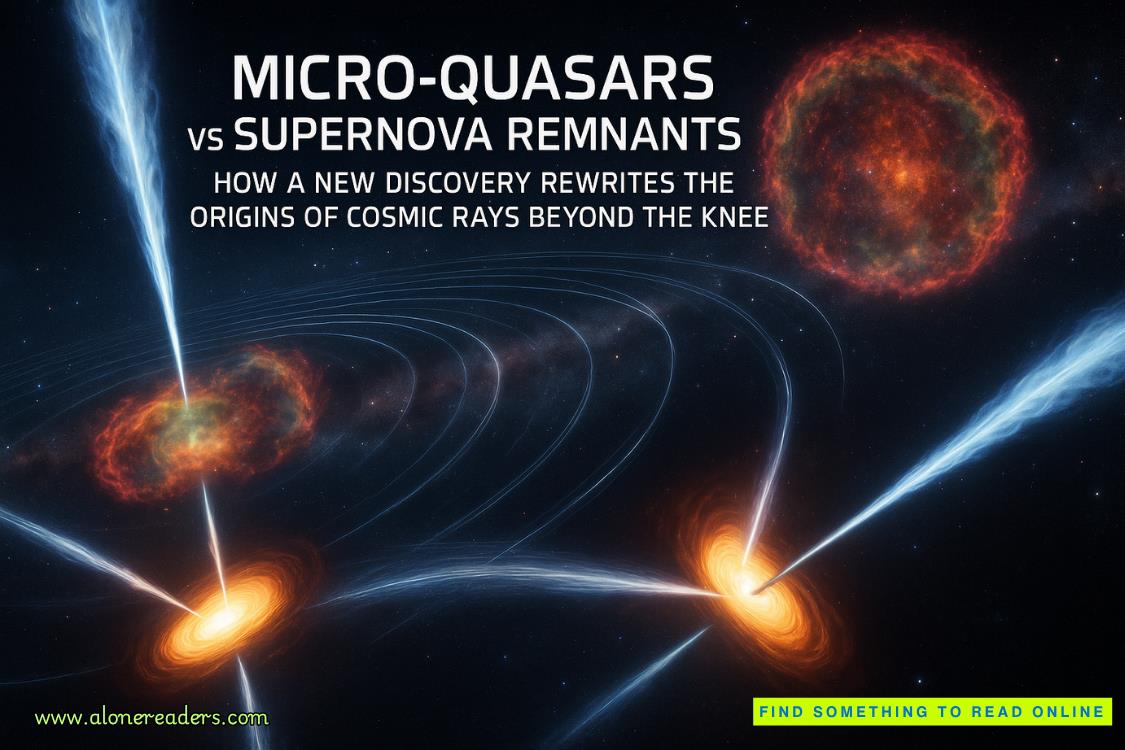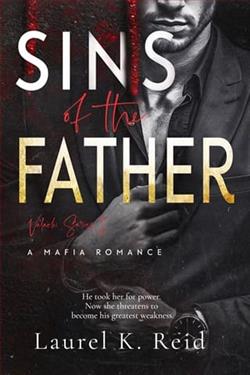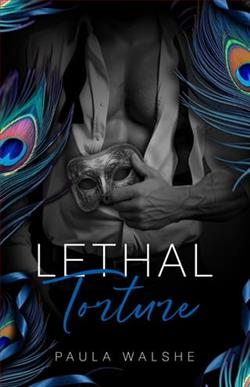Page 27 of Something Wicked (Wicked)
FROM THE ANNALS OF HERMAN SMYTHE:
The locals around Deception Bay call them the Colony. Why? Because in the late 1800s they built a lodge, which was named Siren Song somewhere over the years, and they’ve lived there together in a communelike tradition ever since. Who are they? Well, let me tell you what I learned from Mary Rutledge Beeman, my friend and one of the most colorful characters from the Colony’s already colorful past!
It all started when Nathaniel Abernathy married his young bride, Abigail, and moved from the East Coast to the West Coast, about as far as humanly possible across North America. Both Nathaniel’s family and Abigail’s were rumored to be descendants of the women who were condemned to die during the Salem, Massachusetts, witch trials of the 1600s. Incidentally, the capital of Oregon is Salem, and it was named after Salem, Massachusetts.
Nathaniel and Abigail must have gotten a big surprise when they realized their union spawned children with extraordinary abilities. No one knows how, but it’s a proven fact that Colony members—usually women—can do amazing things. How? It’s been speculated that it’s in the genetic code for this tribe, the result of a mutated gene, maybe. Whatever its cause, it has played havoc with Colony members and locals alike throughout the years.
When Nathaniel and Abigail Abernathy reached the Pacific Ocean, they decided that’s where they wanted to live, and set about buying up as much real estate as they could. They purchased a stretch of property along the Oregon coast and therefore amassed vast acreage that included mountain forests with old-growth timber, a large rock quarry, and a hunk of coastline. In a very short period of time their holdings stretched from the foothills of the Coast Range on the eastern edge, across the land on both sides of what is now Highway 101, to the Pacific Ocean itself (though, because of a later Oregon law, the beaches that were their property were ceded back to the state, as all Oregon beaches are now publicly owned).
The Abernathys cleared smaller tracts of land, too, and Siren Song was erected in a spot that was clear cut of timber. Stands of forest still abut the south section of the lodge and grounds, framing the lodge and a makeshift unincorporated “town,” which is inhabited mostly by Foothillers. (More about them later.) Southwest of the lodge is the small town of Deception Bay, which spills across Highway 101 in both directions toward the timberland to the east and the Pacific to the west.
From the onset Nathaniel and Abigail bartered and bought even more adjacent lands to expand their isolated retreat. Though their descendants no longer own that stretch of beach or Serpent’s Eye, the small jut of rocky coastline directly across from the lodge, where a now-unused lighthouse still stands (an area that’s islanded when the tide comes in), they do own a larger island, Echo Island, which is about one square mile and is located in the treacherous waters of the mouth of Deception Bay itself—the bay the town was named after, which in itself was named for the deceptive and deadly currents and waves that swallow fishing boats almost every season.
Nathaniel and Abigail got busy right away starting a family, but of their children, only two survived: Sarah and Beth (Elizabeth). All the boys died in infancy or were stillborn, as were several other girls. Abigail was late in her life by the time Sarah and Beth arrived, and though she lived into her late eighties, long past her husband, she wasn’t much of a parent to her daughters, so they mostly raised themselves. Beth, plagued by visions or sounds or sensations she couldn’t handle, apparently went mad when she was in her early thirties. She had one son out of wedlock, Harold Abernathy, who was scorned by the townspeople both for being born a bastard and for always acting decidedly odd. A hermit, Harold lived in sin with his young wife, an Indian shaman’s daughter, who died giving birth to Harold’s only child, Madeline “Mad Maddie” Abernathy, who lives in Deception Bay to this day.
Savannah stopped reading again, though she didn’t lift her eyes from the page. She was remembering her own meeting with Madeline Abernathy Turnbull and the woman’s predictions that she would have a boy—before Savvy even knew she was pregnant. Though Madeline had never lived at Siren Song, and had mostly been shunned by Catherine and Mary, she’d certainly seemed to have received the “gift” of precognition.
The further Savvy delved into the history of the Abernathys, Rutledges, Beemans et al., the more she felt as if she were being sucked into a mire that, although interesting, wasn’t going to help her discover the truth about Mary’s death or anything else. Still, she was determined to finish A Short History of the Colony, if for no other reason than to be as informed as everyone else.
She turned back to the page.
Beth either fell or threw herself off a cliff into the sea. She was presumed dead, though her body was never retrieved from the cold waters of the Pacific. Some people think she was pushed to her death, possibly by her sister Sarah, who got rid of Beth in order to become sole heir to the vast property amassed by their parents, Nathaniel and Abigail.
Sarah Abernathy, the surviving daughter, married James Fitzhugh in 1909, but James died in a hunting accident on their tenth wedding anniversary. In 1920, a full year af
ter her husband’s death, Sarah gave birth to a baby girl, Grace. It’s been theorized that Sarah had an affair with an Indian shaman, whom she seemed to fall under the spell of sometime before her husband’s death. Rumors have it that Sarah and the shaman plotted to kill James, but no one knows for certain, and his “accident/murder” has never been solved. Sarah has been much vilified by the Deception Bay townies over the years, and even her descendants are suspicious of what her intentions were.
But everyone agrees that Sarah was remarkably bright and learned about the value of land ownership from her father, Nathaniel. She managed to increase the family’s amount of acres of timber and farmland and their coastal holdings during her lifetime. Sarah raised Grace alone and modernized the original homestead, transforming it into the imposing lodge it is today, although electricity and indoor plumbing run only on the main floor. The upper floors are much as they were when the place was first erected.
During Sarah’s time, there was a bunkhouse on the property, left over from her parents’ days of ranching and farming. Some say she enticed local men to do the work by offering up sexual favors. Others fervently believe Sarah possessed strange powers and that she used those powers to persuade the neighboring farmers, millwrights, and lumbermen to build onto the lodge and improve the grounds. Whatever the case, men seemed to come from far and wide to help out, while their wives and sweethearts stewed and gossiped about Sarah, only adding to the rumors of witchcraft that continually plagued the Colony and their supposed demon-possessed ancestors.
Members of the local community, Deception Bay, have long regarded the growing “cult” with suspicion. Fueled by gossip and the strange heritage of the Colony, the townspeople felt Sarah believed she was some kind of high priestess. It’s not clear who dubbed the lodge Siren Song, whether it was the locals or someone associated with the Colony itself, but Sarah’s actions seemed to be the reason, and the name stuck. Sarah’s shaman lover never acknowledged that he was a) her lover or b) Grace’s father, but his friendship and relationship with Sarah continued until her death in 1956, shortly after her daughter Grace’s marriage to Thomas Durant, a hard-drinking, good-looking, and hotheaded lumberjack who grew up in and around the Colony. Thomas was the son of one of the male workers who seemed completely under Sarah’s spell. (Thomas Durant’s mother, who was known by the single name of Storm, was a member of the same Indian tribe as Sarah’s shaman lover. Some say that Storm was the shaman’s sister and that Thomas was really Grace’s first cousin. This is the same tribe from which the sole member of the other branch of the Abernathy family tree—Harold Abernathy—took his young Indian bride.)
At the time of Grace and Thomas’s marriage, Grace was already pregnant with Mary, who was born June 21, 1958, the summer solstice, and the town gossip is that Thomas raped Grace in a night of drunken debauchery. From the get-go, Mary was a fussy, unhappy baby—the result of “nature” or “nurture,” or possibly both, as the fights between Grace and Thomas were legendary. He was a womanizer; she a fiery, angry woman who could give as good as she got. (Baby Mary seemed to absorb the fury, wrath, and passion between her parents, Grace and Thomas, and was herself an unstable brew of mystical, inexplicable genetic material. She grew psychologically twisted herself. A dark personality at best, a deranged one at worst, Mary’s strange behavior became legendary.)
After Mary’s birth, Grace and Thomas’s relationship, always tumultuous, grew even more strained. They both recognized something strange and dangerous in their daughter, though neither really addressed the issue head-on. They always spoke of it in the abstract, though even when she was a baby, Mary’s precognitive skills were obvious.
When Thomas inexplicably disappeared bare months after Mary was born, the locals breathed a sigh of relief, as he was a notorious drinker and brawler. But then more rumors swirled. What happened to him? Where did he go? Was foul play involved? No one, however, was really interested in asking a lot of questions, not even the local sheriff, as Thomas Durant was in and out of the local jail more often than not, always causing problems. People were kind of glad he was gone. Maybe he was killed; maybe he wasn’t. A number of people said they’d spotted Thomas in the days after his disappearance, and everyone allowed that he’d probably just taken off. It was the safest assumption. Still, like Grace’s aunt Beth’s body a generation earlier, he never resurfaced in Deception Bay.
Grace, free of Thomas, married John Rutledge in 1959, regardless of the question of the marriage’s legality (since no one knew whether Thomas was missing or dead). From the moment of the marriage Grace maintained that Mary was a Rutledge and never used the name Durant again. Within the year, Grace and John had one child together, a girl, whom they named Catherine.
In 1975 Grace and John were killed in a freak automobile accident: their car missed a turn and plummeted into the Pacific Ocean at the sharp corner known as Devil’s Point, a spot where the storms that rage across the Pacific hit the shore with incredible force. The funneling waters at that cove have become the graveyard for many a boater or surfer. Grace’s daughters, Mary and Catherine, were seventeen and fifteen, respectively, at the time of the accident. Though Grace and John had always planned to write a will in which they named Catherine as the primary beneficiary—therefore leaving her in control of Siren Song and all the other property—Catherine was too young at the time of their death and they never fully formed their plans. Their eldest daughter, Mary, took over, and that’s when the fun really began.
Mary treated her new position much as her maternal grandmother, Sarah, had: as if she were a high priestess and the only rules that mattered were the ones she made herself. But Mary wasn’t as innately intelligent as Sarah, and her hot anger wasn’t tempered by cold calculation, like her father, Thomas’s could be. Mary was a very sexual being and took lovers indiscriminately. This is a fact I’m personally aware of, as I spent time at Siren Song myself, one of Mary’s many willing conquests.
But this story is of the Colony, not me.
Another of Mary’s lovers was one Richard Beeman, who, Mary claimed, was her husband. There is no record of this union, though Catherine insists the marriage was real. If Richard Beeman were truly Mary’s husband, he certainly slipped in and out of Deception Bay and Siren Song without much more than a “How do you do?” I’m inclined to believe he is a fabrication.
At the time of her parents’ death, Mary, wealthy enough to do as she pleased, was beyond a narcissistic megalomaniac. Her mind was fractured, however, and self-satisfaction and even cruelty were her way of life. As far as relationships went, Mary slept with whomever she wanted, and damn the consequences. She left behind a string of lovers and a number of children whose paternity has never been fully established.
Mary’s sister, Catherine, never married. She became a midwife to Mary, who delivered children like a mother cat, indiscriminately and without much interest in the newborns once they were a couple of months old, and she was also called occasionally by the townies, if a midwife’s help was needed. They feared her less than they did Mary.
The Colony had a feel of a commune after Mary took over, during the last half of the late seventies and into the eighties, with Mary still as sexually active as ever and Catherine managing the care of the growing brood of Mary’s offspring.
Beyond Catherine and Mary, there were a number of men who lived in the bunkhouse, which burned down in the mid-1980s. These men were there to service Mary, and there are tales of Catherine shooing them out time and again, and rumors that she actually struck the match that finally burned the bunkhouse down. There were also a number of cottages built along the eastern rim of land, which leads toward the Coast Range, and a smattering of families still live there. These Foothillers—whom I mentioned before—formed their own “town,” which has never been really named or incorporated. Most Foothillers are Native American, but some were shirttail Colony members, never fully recognized, but bound by some ill-defined relationship. Some of them exhibited extra abilities. Some of them
pretended to be special. Some of them claimed to be Mary’s past lovers. Mary paid scant attention to them, as she did the men who later cruised through the bunkhouse, while she descended into a darker interior world. Eventually, those Foothillers who were tied to the Colony all but disappeared.















